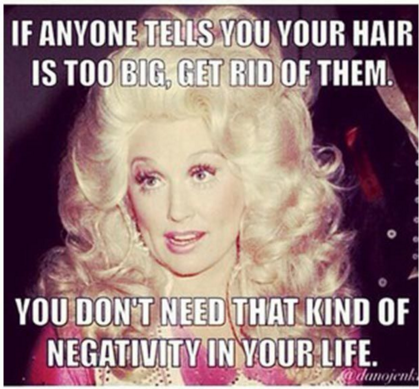
Wounds matter in life and in fiction. We’ve all been hurt in some way and to some degree. Just goes with being human.
Admitting weakness, failure, mistakes, and flaws isn’t always easy. In fact, it can be downright terrifying for even the ‘strongest’ of us. It’s an especially daunting task in a world that idolizes something none of us will ever be…perfect.
Wounds are part of the human experience. When we understand the nature of wounds, our fiction becomes all the richer just by adding in these layers.
All genres and all stories require wounds. No wound and no story. Even The Little Engine That Could had self-esteem issues and a confidence problem 😉 .
Wounds provide friction vital for conflict, No conflict, no story. Conflict turns pages, sells books, and cultivates fans.
The entire point of stories is a flawed character overcoming some internal issue (damage) in order to triumph over an external problem. It’s why readers read fiction.
Undamaged characters aren’t simply boring, but the audience won’t be able to relate with them. How can we empathize with someone who lacks a past? Who’s never made a mistake, has no regrets, or has lived a charmed and problem-free life?
Short answer? We can’t.
Wounds: Genre Dictates Damage

This said, the wounds need to fit the genre because genre acts as a guideline for reader expectations. Our goal as authors should be to meet then exceed reader expectations.
Stories are all for the reader or should be, which is why genre constraints can be very helpful for writers.
No one expects a cozy cupcake mystery to explore the nature of evil. Readers who gravitate to this genre are wanting a lighter read and will resent us playing Dostoyevsky.
Conversely, if a reader is in the mood for a story that probes the depths of the human condition, they’re probably not picking up a novel about a cupcake baker who solves local crimes.
Many emerging writers often shy away from damaged characters and use genre as an excuse to avoid the uncomfortable. Big mistake.
A cozy cupcake mystery can give the reader the light entertainment she craves and also offer emotional resonance she needs…without being Crime, Punishment and Cupcakes (though that’s a killer title, LOL).
When we understand wounds better, it helps us cultivate layered characters who’ll make for page-turning stories, regardless of genre. Let’s look at some common sources for wounds.
Pain of Perfect

First, what is perfect? Good question. Humans all across time and in every culture idolize perfect (always have and always will) though what perfect is varies vastly and changes all the time.
Just take a moment to google female beauty standards across the ages and it’s easy to see how, while the world around us might change, people don’t.
We are still ridiculous.
The ancient Incas thought being cross-eyed was super sexy. RAWR. They often fitted infants with a plank between their eyes to artificially create this ‘natural’ beauty for those unlucky enough to be born with ‘normal’ eyes. Ancient Greece was hot for the unibrow.
From ideal body type to what constitutes success to what constitutes normal or abnormal is in constant flux, and is different everywhere. It even varies from household to household depending on culture and you got it…wounds.
This is where writers can have a lot of fun creating mayhem in fiction.
Wounds: Pain of Falling Short

No matter what genre we write, a character failing to ‘live up to’ some ideal is gold.
Maybe your character has spent a lifetime being measured against the ‘perfect’ older sibling, and struggles with self-esteem. This character might flounder trying to create his/her own distinct identity.
Or flip it.
What if the character happens to be the ‘perfect’ older sibling? This character didn’t ask for family or outsiders to pick on his or her younger sibling for not being as smart, talented, pretty, ambitious, etc.
This character never asked to be the standard unit of measurement to judge another human being. How much guilt might come with that? Think of the pressure or even the fear of being exposed as a ‘fraud’?
Also, we have another ‘person’ who lacks a distinctive identity. While we have two very different ‘people’ both characters are defined in relation to the other.
Outsiders have denied agency to both. It’s amazing how something as simple as birth order can create a wound that drives characters and their decisions (good and bad).
We see this sort of wound explored in everything from The Joy Luck Club (literary fiction) to Game of Thrones (epic high fantasy) to one out of every three Hallmark movies 😉 .
The Diseased Family Tree

Since we’ve been in quarantine for months now, many of us in close quarters with loved ones, we might be even more aware of old wounds that haven’t healed at all or have healed improperly.
We touched a bit on family damage a moment ago in regards to ‘perfection.’ Family damage can come in many forms.
Joe Hill’s Heart-Shaped Box does a brilliant job of exploring the ‘anti-goal’ which is a common fruit of the diseased family tree.
Judas Coyne is a famous rockstar, wealthy beyond imagination who has everything (including a lot of emotional baggage). Hate, anger and resentment fueled his incredible success, yet false guilt and profound shame keep him from enjoying any of it. A vengeful ghost determined to destroy him body and soul might be the only thing with the power to liberate Coyne from his emotional bondage.
Sometimes the diseased family tree is not as obvious. Often, parents believe they’re giving their children the best, but are actually deluded about the nature of their motives.
In The Luckiest Girl Alive, TifAni’s mom is superficial, materialistic, and self-absorbed. Her father is an emotionally absentee ghost who resents his life. Her mother pushes for TifAni to attend an elite prep school to give her daughter all the opportunities she missed (code for ‘marry real money’). Dad doesn’t have the spine to stand up and say ‘no.’
Both parents are too self-centered to realize TifAni in that school is a ticking bomb.
Of course, not every character needs to grow up in Season Ten of The Jerry Springer Show in order to take on some damage. The road to therapy is paved with good intentions.
Parents are human, too.
What Alice Forgot by Liane Moriarty explores how the best of intentions can poison everything.
Life Wounds All

Life has 100% fatality rate. No one gets out alive. Also we’re all going to get hurt somewhere by someone (and hurt others, too). Thing is, life is all…pointy.
If family doesn’t make us bleed, then school, peers, romantic interests, work colleagues, Facebook or plain bad luck will.
I know. I missed my calling writing inspirational cards 😛 .
Why am I talking about all this? Because we writers have more ‘competition’ than any other time in human history. With no gatekeepers, discoverability is a nightmare. There are a gazillion choices for books and most of them (like cable channels) are a waste of what little free time we have.
More is Not Always Better
From movies to television to books, audiences are deluged with tired tropes, boringly predictable plots and characters with the emotional depth of a goldfish. We can see this ‘glut of meh’ as a problem or use it for our advantage.
If we know why readers read, what they want, then we can work hard on what matters.
Readers long for emotional connection and stories that help them deal with pain, ease their pain or maybe even solve/release their pain. They want hope that messed up people overcome big problems in spite of, or perhaps because of, wounds and flaws.
Audiences yearn to believe that, on the other side of their problems, there is joy, peace, true love, freedom, fulfillment, healing, understanding, wholeness!
Wounds are healed and victory sealed. Who doesn’t want more of THAT?

What Are Your Thoughts?
Getting tired of the same old same old? From Hollywood to books it feels like it’s just the same stuff over and over. I get giddy when I discover something truly excellent. Some of my best therapy and a-ha moments have come from fiction.
What about you?
I love hearing from you!
What are your thoughts? We need to write the stories that change the world because, if one looks back? That’s what writers do. The world is ailing and our stories provide the medicine, if not the cure.
I hope y’all will join me for my advanced class this THURSDAY. I’m working to mix in some advanced training along with fundamentals. We’ll be exploring something new—the unreliable narrator.
Also, my brand new plotting class from last week, There & Back Again: From Bright Idea to Successful Novel is now available On DEMAND!
Trouble with Story-Worth Problems? NEW CLASSES to HELP!
The Unreliable Narrator: Turning the Reader’s World Upside Down
Class is June 4, 2020 from 7:00-9-00 P.M. and a recording (as always) is provided with class purchase. Price of the class is $50 but use lockdown15 for $15 off.
For those who want BOTH classes PLUS a BONUS class as well as an EXCLUSIVE and PRIVATE workshop? I offer you…
The Deep Dive Bundle: Two Classes & EXCLUSIVE Log-Line Workshop
Almost nine hours of training! This also includes working one-on-one in a private workshop with moi! Workshop ONLY available to bundle participants. No discount codes because the discount built into the pricing. Recordings included.
Can’t wait to see y’all in class!
On Demand Classes
Ah, very few remaining On Demand classes we’ve not yet purged from the servers so take advantage while they remain. Also (at top) is the NEW plotting class.
On Demand: There & Back Again—From Good Idea to Successful Novel
$50 but use lockdown15 for $15 off ($35)
On Demand: Dark Arts, Building Your Villain
$50 but use lockdown15 for $15 off ($35)
The Edge: How to Write Mystery, Suspense, & Thriller
$50 and use lockdown15 for $15 off ($35)
Tick Tock: How to Write a Mystery Suspense Series
$50 and use lockdown15 for $15 off ($35)








4 comments
4 pings
Skip to comment form
As usual, an interesting blog post.
Perfect, thank you for such outstanding examples.
Splendid points and gripping examples. BTW, did you know the Mayans had the same head mashing fixation as the Incas and hoped for cross-eyed babies? Who knew?
An excellent post. The most important thing I took away here (apart from life having a 100% fatality rate, LOL) is how genre constraints will determine what wounds the character has. This will prevent me from getting too ambitious when writing my current WIP.
[…] Stavros Halvatzis explores spiritual growth and the age of a character, Kristen Lamb looks at how wounds fashion unforgettable characters out of damaged pieces, and Jenny Hansen lists the 8 C’s of character […]
[…] of my favorite recent articles on the website is about how to craft character wounds to create unforgettable stories. This has been a key theme in my writing: Deeply flawed characters mirror real life. No one wants […]
[…] Genre will dictate what kind of wounds and the level of damage, but my point here is that pain is pivotal for any good story. Perfectly adjusted people make for lousy fiction (provided such people even exist). […]
[…] previous posts, we’ve discussed how wounds don’t always need to be big to be BIG. Though today we’ll cover some more extreme […]